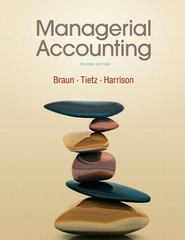Question
Discussion Inventory Issue Assume a public company in the semiconductor industry that has been around for a long time. They have some slow moving inventory,
Discussion Inventory Issue
Assume a public company in the semiconductor industry that has been around for a long time. They have some slow moving inventory, which has a cost of $150 million. It is material when compared to annual net income, and very material compared to quarterly results. Total inventory at the most recent quarter end was about $600 million.
The inventory items in question are what this industry calls service inventory. Basically, it is spare parts that are not required for any of the products currently in production. Potential demand for these parts (if any) will come from current customers who have to replace worn-out components or from those seeking an upgrade.
In this case, slow moving appears to be an understatement, because there has been little demand for these parts over the past twelve months and internal forecasts are for no sales at all for the next 12 months. However, in all fairness, demand for these parts is extremely difficult to predict and there may be potential demand.
This problem didnt just happen recently. It has been an issue for a while, but the company wants to do something about it now. The operations side wants to pare-down storage costs and more effectively manage the companys active inventory. The accounting side wants to find a way to get rid of this inventory without dramatically impacting quarterly earnings. Another key fact is that the companys inventory reserve is relatively small and it cant come close to absorbing the slow-moving stuff.
The company has proposed the following solution to the problem, which has been approved by corporate accounting and the companys CFO, i.e., it has widespread support within the company. (Also, the same firm has audited the company since inception, but they just changed auditors. It appears that the old auditors passed on any inventory adjustments.)
- The slow moving inventory items will be physically transferred to a warehouse and stored separately from the rest of the inventory to reduce storage costs and to get it out of the way of normal moving inventory.
- On the books it will be transferred out of active inventory and given its own category, but still classified as inventory on the balance
- The entire spare parts inventory ($150 million cost) will be amortized against income (straight-lined) over five years. I dont know what will happen on the tax side, and this appears not to be an issue with the company.
My contact within the company strongly opposes this scheme. She has been told that it is consistent with industry practice but she has been given no examples of companies who have done this even though she has asked several times.
What do you think?
Step by Step Solution
There are 3 Steps involved in it
Step: 1

Get Instant Access to Expert-Tailored Solutions
See step-by-step solutions with expert insights and AI powered tools for academic success
Step: 2

Step: 3

Ace Your Homework with AI
Get the answers you need in no time with our AI-driven, step-by-step assistance
Get Started


